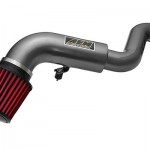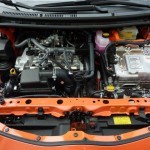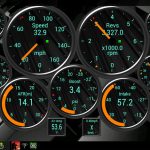If you are having trouble determining what your car’s Common engine codes mean, this article will help. Learn about the P0128 code, EVAP system, and CKP sensor. Identifying common engine codes is easy when you know the cause. Follow these tips to fix common problems and avoid costly repairs. Read this article to find out what these codes mean and how to get rid of them. There is also a list of common symptoms that may indicate your car needs to be fixed.
Common engine codes
If you are not sure what your car’s common engine codes mean, then you should first understand what they mean. These codes have two parts – the first digit, which is generic for all vehicles, and the second digit, which is manufacturer-specific. Generally, codes beginning with P0 or P1 indicate problems with the powertrain. The first two digits represent the powertrain, while the third character is usually related to the engine’s air metering system or mass air flow sensor.
The most common code, P0420, refers to an issue with the catalytic converter. This code means that the catalytic converter needs to be replaced. Another one, P0430, indicates that the catalytic converter has failed and needs to be replaced. These codes are associated with other codes, including misfire and oxygen sensor. If you know what they mean, you can make simple repairs yourself or take your car to a mechanic.
P0173 refers to a malfunction in the mass air flow sensor. The engine control module is responsible for balancing the air to fuel ratio, but a faulty sensor can trigger the code. Excessive compensation can cause the P0174. In other words, your engine misfires. In this case, you should replace the misfired part. The fuel sensor should also be replaced if needed. These codes are useful when it comes to determining whether you have a vacuum leak.
EVAP system
In order to properly diagnose the EVAP system, it is crucial to know the codes your car is emitting. There are various reasons why this trouble code could be set. Some faults are related to leaks, blocked lines, or faulty sensors. Some problems are also related to rust and the fuel filler pipe. To fix EVAP system problems, you can follow these steps:
If the code appears, it means that your EVAP system is leaking fuel vapors. There are two possible causes of this problem: a faulty EVAP purge valve or a faulty solenoid. You may be able to detect a leak in your vehicle by performing a smoke test. However, if you suspect a leak in your EVAP system, it is important to get your car checked by a professional auto mechanic.
To determine whether your vehicle has a leak, you should turn off your engine and inspect the EVAP system. The leak in the EVAP system may not cause your car to run badly, but you might notice fuel fumes in your car. In order to properly diagnose EVAP system problems, you need an OBD-II diagnostic scanner. These diagnostic scanners read trouble codes that describe the problems in your car.
Using a scan tool with an advanced diagnostic system will help determine the leak’s location. A mechanic will also use a smoke machine to push smoke through the EVAP system. This machine will show the mechanic if there is a leak. If the smoke test comes out positive, it means the problem is in the EVAP system. Otherwise, a mechanic will simply recommend replacing it. In order to repair EVAP, you must connect the vehicle to the OBD-II scan tool.
CKP sensor
In order to test a CKP sensor, you must first determine which type it is. There are two main types: pick-up-coil and Hall-effect. If your sensor is pick-up-coil type, use an ohmmeter to measure its active resistance between its terminals. A reading of zero or close to zero indicates a short circuit. However, measuring the resistance alone is not enough to determine the cause of a faulty CKP sensor. It could also be that the sensor is Hall effect type, causing induced voltage.
In most cases, the CKP sensor is damaged by engine vibrations and heat. Its internal wiring becomes weak due to tiny fluctuations in temperature and vibration. A worn or broken reluctor ring can also cause the sensor to generate a weak signal. Then, a faulty sensor can lead to cranking and no start symptoms. You can also experience a cutout of the engine due to a faulty CKP sensor.
Before you begin installing the new CKP sensor, you should first disconnect the battery and ignition switch. The negative terminal on the battery should be disconnected. Once you are sure that everything is disconnected, you can begin removing the CKP sensor. Depending on the vehicle model, you might need to remove some other parts of the engine before reaching the CKP sensor. Make sure to keep the vehicle cool before attempting this repair. Check your vehicle’s repair manual for more instructions.
P0128 code
If you’ve noticed the P0128 code on your engine codes com, you might be wondering why it came on. While the code isn’t a serious issue, it will cause your car’s engine to run colder than usual. Additionally, it can cause fuel economy to drop, and the engine may begin to damage over time. Even if it doesn’t affect your fuel economy right away, ignoring the code could lead to bigger problems down the road.
The P0128 code is an indication that there’s a problem with the engine’s thermostat, ECT sensor, or other components. It’s crucial to have your car checked by a mechanic. Your engine needs to operate within a certain temperature range, and any issues with these components should be fixed first. Using an OBD II scanner can also provide you with detailed diagnostics. These diagnostic tools can tell you if your car needs a replacement or repair.
When the temperature of your car’s cooling system is low, the heater will not heat up properly. In addition, the temperature gauge won’t rise as high as it normally would. If you notice a P0128 code, you should first check your cooling system. The thermostat controls how much coolant your car needs to run properly. A bad thermostat will cause your car’s check engine light to come on, and a lack of coolant will affect your performance and fuel economy.
PDTCs
PDTCs for engine codes are a common diagnostic tool used by mechanics. Essentially, they tell mechanics what is wrong with a car. These codes are unique to each vehicle and can be quite confusing for a technician. The good news is that the Air Resources Board is working with vehicle manufacturers to develop new codes for these vehicles. By using a standardized database, the BAR will be able to control how these codes are applied through the Smog Check inspection process. If a vehicle does not have a PDTC stored in the database, it will not be subjected to this part of the inspection process. According to BAR, the inclusion of PDTCs will not result in an increase in the Smog Check inspection failure rate by more than half of one percent. This is why it is important for mechanics to understand PDTCs so they can
On the other hand, if a PDTC is present but is inactive, it may be because your car’s emission control systems are not working properly. With a readiness monitor, your car’s emission control system will work better. However, if the DTC is still active, you will likely fail the Smog Check inspection. PDTCs for engine codes are more critical than you think. They help you avoid a Smog Check inspection and ensure your car is running smoothly.
OBD Reset Tool
If you’re concerned about the check engine light on your car, a great tool to use is an OBD Reset Tool. These devices will reset the check engine light without disconnecting the battery or taking the car to a mechanic. They can also reset the clock, radio preset, and seat memory, if your vehicle has one. Depending on the make and model of your vehicle, you may need a tool for both purposes.
Before resetting engine codes using an OBD Reset Tool, it is crucial to diagnose the problem. Many modern vehicles have built-in SLEEP mode, which disables the alarm and stores learned memory in a separate module. This allows the ECU to revert to its original settings when the engine is not running. Disconnecting the batteries is not sufficient enough to clear an OBD2 code, and you may be breaking the law if you use another car to do so.
In many cases, a check engine light can be caused by many different problems. A leaking gas cap, an emissions problem, or transmission problem are just some of the problems that can cause the check engine light to come on. Fortunately, resetting this error code yourself is a straightforward process that will save you time and money. To reset the check engine light, you should first download the proper software for your car’s system.





